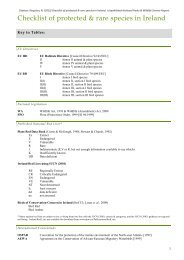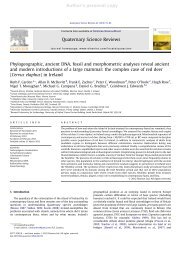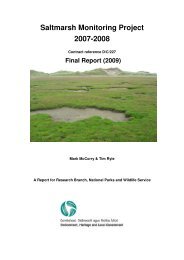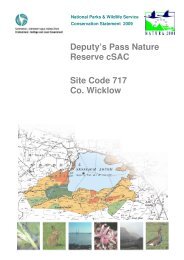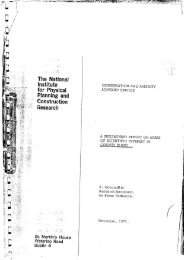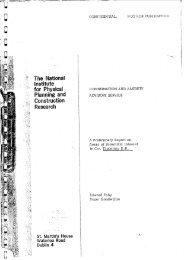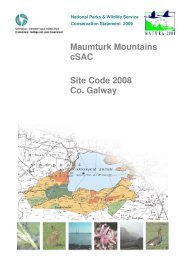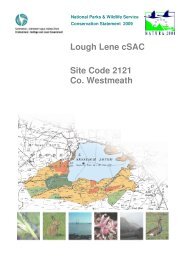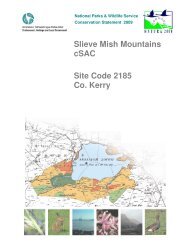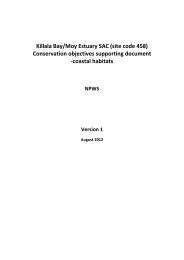The beetles of decaying wood in Ireland - National Parks & Wildlife ...
The beetles of decaying wood in Ireland - National Parks & Wildlife ...
The beetles of decaying wood in Ireland - National Parks & Wildlife ...
You also want an ePaper? Increase the reach of your titles
YUMPU automatically turns print PDFs into web optimized ePapers that Google loves.
Saproxylic <strong>beetles</strong> <strong>of</strong> <strong>Ireland</strong><br />
____________________________<br />
About 50 species appear to have an association with ancient <strong>wood</strong>land and ancient <strong>wood</strong> pasture<br />
conditions (old growth species) – nearly 25% <strong>of</strong> the natives. This emphasises the great importance <strong>of</strong><br />
these habitats for saproxylic <strong>beetles</strong>, and also provides an opportunity for develop<strong>in</strong>g conservation<br />
quality statistics for site evaluation and comparison.<br />
8<br />
Figure 4: Caledon Deer Park, Co. Tyrone © Keith Alexander<br />
Special features <strong>of</strong> the Irish saproxylic fauna<br />
<strong>Ireland</strong> is the global epicentre for at least one species <strong>of</strong> saproxylic beetle. <strong>The</strong> Holly Weevil<br />
Rhopalomesites tardyi was discovered new to science and named after James Tardy a prom<strong>in</strong>ent Dubl<strong>in</strong><br />
entomologist <strong>of</strong> the early 19 th century – as Cossonus tardii – and taken by him and N.A.Vigors <strong>in</strong> July,<br />
1822, near Powerscourt waterfall, Co. Wicklow, under the bark <strong>of</strong> decayed hollies. Strangely, Tardy is<br />
reported as say<strong>in</strong>g “I have <strong>in</strong> va<strong>in</strong> sought for it <strong>in</strong> places abound<strong>in</strong>g as much <strong>in</strong> holly and <strong>in</strong> similar<br />
situations <strong>in</strong> the same country” (Nash, 1983). Today it is one <strong>of</strong> the most widespread species to be<br />
found, occurr<strong>in</strong>g <strong>in</strong> hedgerow and boundary stands <strong>of</strong> trees as well as old <strong>wood</strong>lands. Interest<strong>in</strong>gly it<br />
has subsequently been found <strong>in</strong> Brita<strong>in</strong>, although it is very localised and concentrated along the<br />
western seaboard. Its global range is restricted to <strong>of</strong>fshore islands and extreme western coasts <strong>of</strong>



